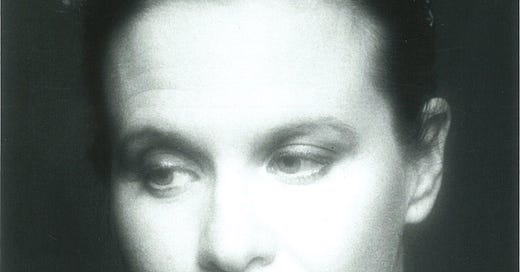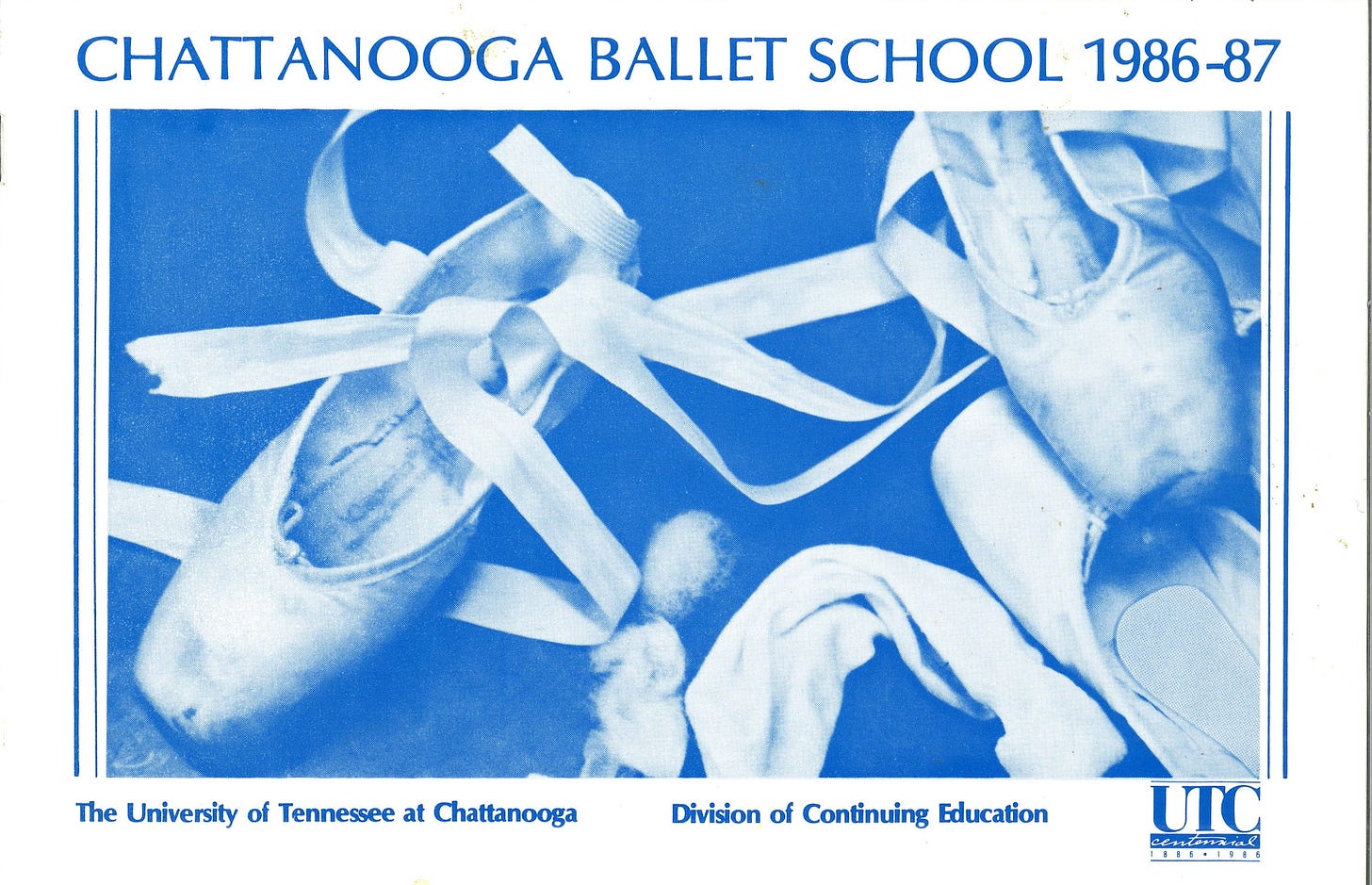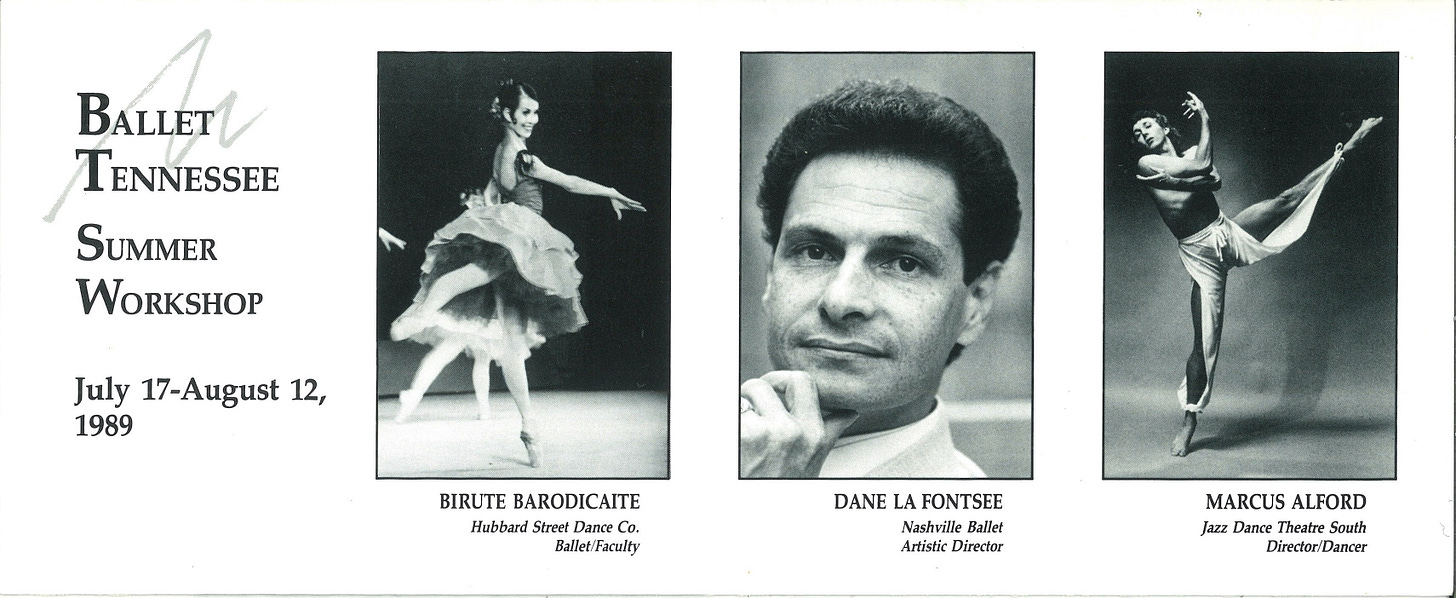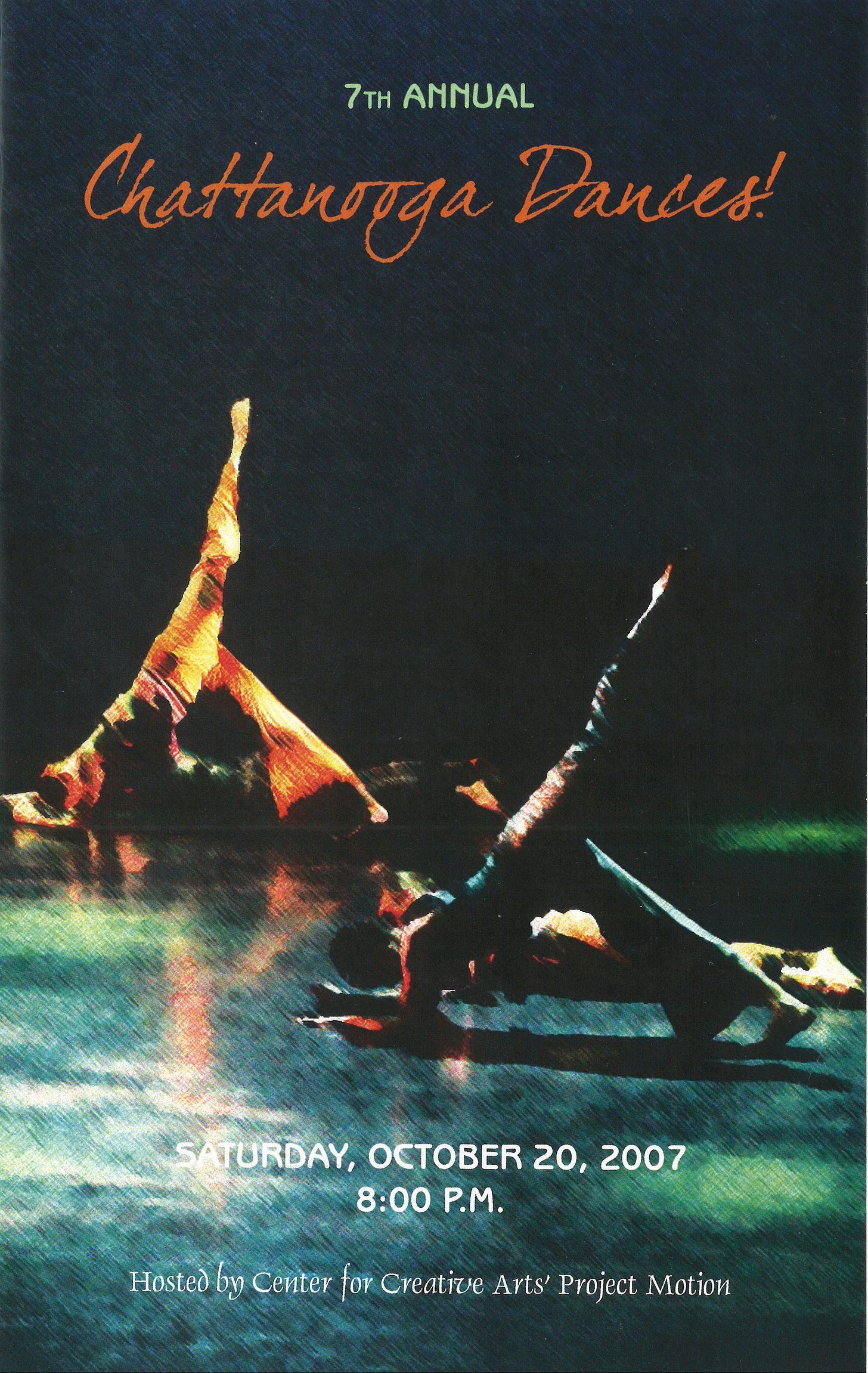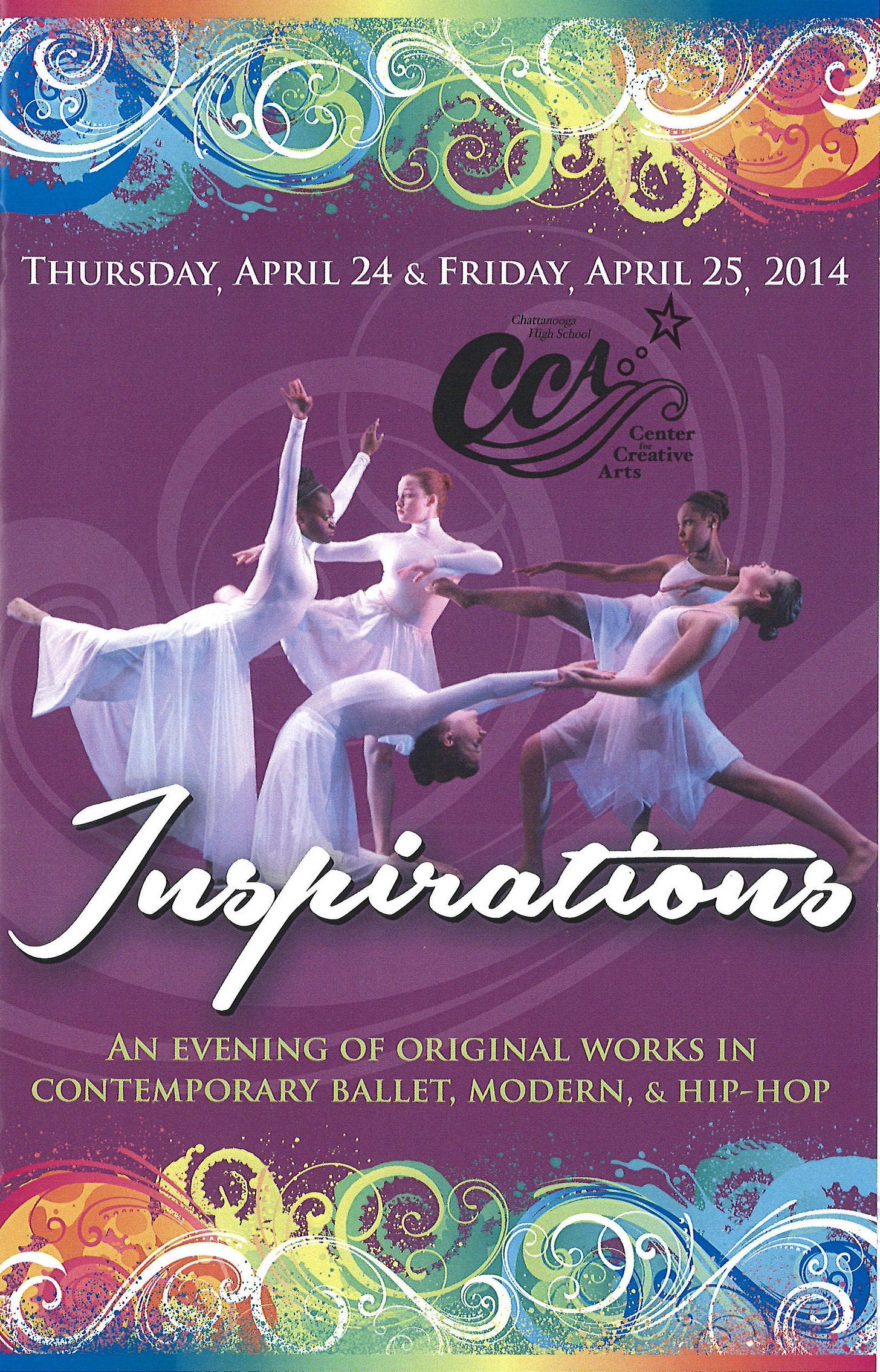A Life in Balance
Karen Wilson, director of ProjectDance and retired director of dance at Center for Creative Arts, shares insights into the history of public dance education in Chattanooga.
Welcome!
You’re reading DanceChatt, a publication dedicated to dance writing centered in Chattanooga, Tennessee.
When I started this publication, I had little idea how strong the focus on pedagogy would become. It’s partly me — I’m an adult beginner, so I’m interested in the how of dance. How do I learn? How do I get better? How do I translate instruction aimed at teenagers into my body?
And it’s partly the community. Performers give shout-outs to past teachers. With time and money for arts education hard to come by, folks ask for articles about who’s doing what in the public schools. When I ask who people would like to learn more about, the answer almost always includes teachers.
One name I heard getting a lot of shout-outs this spring was Karen Wilson, director of ProjectDance and retired director of dance at Center for Creative Arts. Many of the artists at Juba Dance Festival claimed her as an early mentor. She has played a big part in the history of dance education in our city, and I’m happy to share a Q&A with her this issue.
In some ways this piece functions as a foil to the Q&A with Louis Marin-Howard a few weeks ago. Louie surveys the Chattanooga dance education scene with an outsider’s eyes, Karen with an insider’s gaze. Both perspectives have merit. I encourage you to look at those works in tandem. This one is a long Q&A, full of history. You’ll need a whole pot of tea.
DanceChatt needs you!
If you’d like to write for DanceChatt, reach out in the comments. I’d love to carry more reviews. I’d love to keep including ekphrastic works — literary reflections about dance. As a marketing writer by trade, I write to praise. It’ a great starting point, but this publication needs all y’all’s voices to elevate the conversation. Do you have a pitch idea? Click the button below and let me know what you think.
A Life in Balance
By Jenn McCormick
Photos courtesy of Karen Wilson
A dance tradition is built upon the skills that keep any ongoing human endeavor alive — teaching, managing, administering, directing. These skills may not sound romantic (though I think they are; what’s more noble than actually doing the work?) but they’re essential.
Karen Wilson, director of ProjectDance and retired director of dance at Center for Creative Arts, has been doing the work. Today, dancers who came through her classrooms and programs are creating professional work in Chattanooga and across the world. Last month I sat down to chat with her about how the Chattanooga dance community got where we are at this moment — summer 2023 — and how we sustain what we’ve created.
We chat about the spring/summer 2023 season
DanceChatt: This spring, Juba Dance Festival and Legacy Project with Carolyn Dorfman Dance were beautiful mirrors for the Chattanooga dance community. The Legacy Project saw local dancers take the stage alongside national-level professional dancers. What’s the meaning of that performance for the community?
Karen: First of all, I’m really happy to see us come back from the pandemic and be in a theater again!
The Legacy Project brought back memories of the UTC Fine Arts Center’s Patten Series performances, and their dance series that ran from 1980–2018. The Patten Series showcased the best in professional music, theater, and dance. A season would have at least six or seven performances encompassing all the performing arts. It was where our local students got to see professional dance companies, many for the first time. Professional dance companies such as Parsons Dance, Oakland Ballet, Ballet Hispanico, Bill T. Jones, Complexions Contemporary Ballet, Alonzo King’s LINES Ballet, Pilobolus, Ronald K. Brown’s Evidence, Twyla Tharp Dance Co., Joffrey Ballet, Giordano Jazz Dance, Chuck Davis African American Dance Co., Urban Bush Women, Hubbard Street Dance, Alvin Ailey Co., Momix, Cincinnati Ballet, and many other professional companies usually had a one week residency. And each of those had a community outreach component that sent the directors and dancers out into the local dance community to teach master classes. Over the life of the Patten Series, 71 professional dance concerts graced the stage at UTC’s Fine Arts Center.
Local students throughout the community got to take master classes with these wonderful companies and directors. In turn, as a teacher, I could require students to attend a performance and then write an analysis and critique. Sometimes they moaned and groaned until they got to the performance. Then the next day they’d say, “Thank you for making me do that.”
There’s a direct connection from exposure like that to the dance we see today. Alonzo King’s LINES Ballet was one of the Patten performances I remember. Tarrisha Hicks of Juba Dance Ensemble mentioned at the post-show panel being influenced by Alonzo King as a teacher she’d learned from. She participated in master classes when his company was here with the Patten Series. As a result, Tarisha attended one of his summer intensives in California. That is one way those connections were made.
This year’s Legacy Project again opened the door for local students to meet and interact with professional dancers, giving our local students valuable contacts. That was the beauty this year of seeing professional dance back on the Fine Arts Center stage.
DanceChatt: In Juba Dance Festival, we saw our dancers perform a full-length professional concert. Many of these are dancers who grew up in the community and received much of the artistic and administrative experience needed to stage such a project here in town. How long has it taken us to get here? What had to happen to make this possible?
Juba Dance Festival was such a treat. Even though several of those dancers were students, it was professional level dance. I’m just really proud of the whole group on a number of levels. Several of the professionals on the stage were former students of mine at CCA, including the director, Crystal Newson. She was introduced to classical dance, performing, and choreographing at both Ballet Tennessee and CCA. Both organizations brought in numerous guest artists to expose students to the world of professional dance. That exposure led her to New York City for two summers to study with the Ailey School. Crystal and many others who experienced dance in Chattanooga in the 80s, 90s, and into the 2000s are now giving their talent and expertise to our dance community and building the next generation.
Looking back at Chattanooga dance, 1975–1990
(Here Karen refers to her notes. She takes us back, not to the childhood of the current generation of active dancers, but to the generation before, the beginning of the last quarter of the twentieth century.)
I’ve been a part of Chattanooga’s dance community for the majority of my life. My local childhood teacher was Dorothy Cross, who studied at Chicago’s Stone-Camryn School of Ballet. I didn’t dance throughout high school, but found my way back to it in college in 1977–78 through Karen Smith. She was on faculty at what was then Chattanooga Center for the Dance, which operated under UTC’s Continuing Education Department.
Here’s a bit of Chattanooga dance history that I was a part of:
(Here, Karen arranges her remarks by year. These notes are a product of the memories she shares in our conversation and her emendation to arrange them by particularly important events.)
In 1975, Chattanooga Center for the Dance was established as a 501c3 organization under board president Barbara Tepper. Nancy Lane Wright was the first artistic director. She later left to form Dance Theatre Workshop. Stanley Zompakos, who had danced with New York City Ballet, was then named director around 1977. Around 1979, a two week summer intensive brought in ballet legends Patricia Wilde (New York City Ballet) and Karel Shook (Dance Theater of Harlem) along with Billy Wilson (Tony award-winning Broadway choreographer). It was a hugely inspiring experience for me to take class and have these talented artists working with local dancers.
In 1980, Alexander Bennett was named artistic director of Chattanooga Center for the Dance, and the name was changed to Chattanooga Civic Ballet. Bennett had trained and danced with England’s Royal Ballet, and the board of directors gave him the directive to begin a civic performing company. He was a walking dance encyclopedia. He carried entire classical ballets around in his head. He set Coppélia, La Sylphide (with guest artist Starr Danias of American Ballet Theater), the second act of Swan Lake, Les Sylphides, and other classical works on us without a note in sight! It was also 1980 when I began teaching children’s classes.
In 1983, during a transition year after the departure of Alexander Bennett, we had no official director, but classes continued under Amy Jacobs, Melinda Wright, Ann Shea, Karen Smith, Linda Shinbaum, and myself who were the faculty members that year.
In 1984, Barry and Anna VanCura were hired after a national search. In that year, Chattanooga Civic Ballet changed its name to Chattanooga Ballet. Barry came from Milwaukee Ballet and Chicago Ballet, while Anna had been a principal dancer with Ruth Page Ballet and Ruth Page International Ballet and had danced with American Ballet Theatre. Barry and Anna had their own 501c3 in Illinois, Ballet Midwest, so they had experience running a regional company before they came to Chattanooga, and the board of directors looked to that experience to further develop Chattanooga Ballet. During this time, I was both faculty and managing director, as well as a dancer with the company.
Under the VanCuras’ direction, numerous nationally recognized guest artists visited Chattanooga to teach master classes, summer workshops, and set choreography. Three of the numerous notable figures who came to Chattanooga for master classes during this time were David Howard, dance accompanist Lynn Stanford, and Edward Villella. Barry set many original ballets on the company, including both contemporary and classical works. International dance legend Ruth Page gifted the rights to her ballets Carmina Burana and Romeo and Juliet to Anna to set on the young company. Ms. Page attended the performance of her work at the UTC Fine Arts Center.
In 1987, Ballet Tennessee opened under the direction of Barry and Anna VanCura with several former Chattanooga Ballet dancers and faculty joining them. In 1988, I became full time faculty and business manager with Ballet Tennessee. Barry’s original production of Alice Through the Looking Glass premiered in the spring of 1988 with Tennessee’s governor Ned McWherter in the sold-out audience at the UTC Fine Arts Center. Barry continued creating original ballets and additional contemporary work for the new Ballet Tennessee in studios at the Farmer’s Market complex, then on in studios on Frazier Ave. in North Chattanooga.
The VanCuras continued their emphasis on bringing nationally known dance artists to Chattanooga through master classes and summer intensive workshops. Barry’s production of The Nutcracker premiered in 1988 and continued for many years. One of the highlights for me was the 1990 production at the Tivoli when we brought in the international ballet star Valentina Kozlova as the Sugar Plum Fairy. She was a gracious guest artist and very generous with her time and talent.
From School of Performing Arts to Center for Creative Arts
DanceChatt: But then you left dancing for a while, right?
In 1991, I left Ballet Tennessee to go to work in the writing and publishing field, which eventually led me to return to school to get my education certification in history and English and then a master’s degree in English. I had worked for Chattanooga Life & Leisure magazine between leaving Chattanooga Ballet in 1987 and going to work for Ballet Tennessee in 1988, and I wanted to explore additional areas of publishing. … Ironically, in 1993 I realized I missed teaching and working with young people after all those years of teaching dance! So I returned to school full time and was hired by Hamilton County Schools in 1995 to teach 8th grade English at Chattanooga Middle by principal Edna Varner, whom I had met through my work at Ballet Tennessee. Connections you make through the arts really are impactful!
How did you become involved with Center for Creative Arts (CCA)?
Well, before there was CCA, there was the School of Performing Arts at City High School, which began in 1987 as a school-within-a-school — the term that evolved to mean a “zone magnet” school where the students who lived nearby attended that school because they were zoned for it, but a small group of students came in for a specific program.
My journey to CCA began there in 1988. In 1988, a dance curriculum entered the Chattanooga City School system through the School of the Performing Arts with part-time dance teacher Anne Severn. At that point, Kathy Allison, a well-known and respected community arts advocate, music teacher and performer, was the Arts Coordinator at City High.
I had known Kathy for many years from both Chattanooga Ballet and Ballet Tennessee’s work with the Chattanooga Symphony & Opera. She and I talked often about the performing arts curriculum, particularly about dance. Around 1990, Kathy and then principal Amanda Cate convened a meeting of community arts organizations to evaluate community support for a dedicated performing arts school. Barry VanCura and I were there representing Ballet Tennessee. Several other organizations including Chattanooga Symphony & Opera, Chattanooga Ballet, Chattanooga Boys Choir, Allied Arts, and visual arts groups were also present.
Then, of course, the city of Chattanooga and Hamilton County still had separate school systems and City High School was a city school. There was growing parental, arts groups, and community support to get behind a performing arts magnet school in the city. The community was hungry to support an arts magnet school. City High School arts advocates, community arts leaders, and parents continued to advocate for a dedicated arts magnet school.
With the merger of Chattanooga Public and Hamilton County schools in 1997, superintendent Dr. Jesse Register agreed to allow the school status as a dedicated arts magnet, but the change would occur when the district received funding from the federal Magnet Schools Assistance Program, a program which was designed to help integrate schools without forced bussing. School year 1998–99 was the first year of the three-year granting cycle. More than 50 local artists met to create curriculum and prepare facilities to support quality arts instruction. I remember being in a meeting discussing the layout of the new dance studios in what had been the brick laying and auto repair area of the old City High School!
Chattanooga High School Center for Creative Arts opened as a dedicated magnet for the school year 1999–2000, and I joined the faculty as a history teacher—not dance! While I had missed teaching students, I still wasn’t ready to go back into the dance studio. Also, at that time the dance curriculum was still part-time, being taught by several local dance teachers. It took a while for CCA to have full-time dance instruction. I’m not sure why dance always has this struggle to be an accepted and legitimate. It always seems to be the “redheaded stepchild.”
In spring 2001, the school had reached the point where they were willing to hire a full-time dance person to begin in the fall. Kathy Allison wanted me in on the interview process. She had resumes from across the country. I can’t remember if anyone physically came for an interview, but she asked me several times, “Why don’t you do this job?” I said, “I don’t want to go back to the dance studio right now.” A couple of days later, she came to my history classroom to say: “So-and-so is coming for an interview. Please consider taking this position.” I said, “If this guy falls through, I’ll think about it.”
She then went back to her office, called the applicant and said, “The position’s been filled.” She walked back to my classroom with then principal Gary Record, and so I became the full time head of the Dance department.
Why were you the right person at the right time in the right place?
(She laughs.) I’ll let you ask Kathy for specifics. I knew the dance community, but I was not connected with either Ballet Tennessee or Chattanooga Ballet or any other dance studio, so I was neutral. That helped lay the groundwork for CCA to be a space for dancers all across the city. It also helped in developing Chattanooga Dances, CCA’s community dance concert.
Creating curriculum: approaches to dance instruction
Let’s go back to what you said about dance struggling to be legitimate. Why does dance have a problem with legitimacy, do you think? And how does one go about legitimizing dance as an art in the community?
I think there’s several different ideas involved here. I’ve had lots of people tell me they just don’t understand or “get” dance, or they don’t like it because there is no spoken dialogue. Or they don’t feel like they have an understanding of what is good or bad dance so they don’t feel like they have any frame of reference for a dance performance. So any of those feelings can color their attendance habits and their judgements of what they see on stage. Hence, there is not always a very large or discerning dance audience versus the audiences for music events. Also, many times audiences believe any dance they see on a stage is a quality dance performance. It seems to be much easier for the general public to discern bad music, perhaps because it’s easier for anyone to recognize when a musician hits a bad note or a vocalist is off key or struggles to carry a tune.
My belief is that all approaches to dance are legitimate: professional technical dance, non-professional student dance, recreational dance, competition dance, etc. But the staged products of those different types of dance are not equal. Nor should they always be; each has a different purpose.
As head of the dance department at CCA, how did you go about creating a dance curriculum?
At CCA, my mission for the Dance Department was to produce technically sound, well-rounded dancers, competent in a variety of genres. Jessica Laliberte Bowman and I worked as partners to develop and grow the program. The curriculum was designed to be grounded in ballet and modern. It was designed to deliver a broad understanding/experience of the art of dance as well as develop technically proficient students who can pursue dance as a college major or career path.
An important goal is also to develop lifelong advocates of dance and the arts. I’ve talked to parents of young students, who would sometimes say, “I just want them to have fun.” My response was, “That is legitimate, but why not give them the best possible teaching now, because you don’t know what they may want to do when they’re 15, 16, 17 years old.”
When I took over the CCA dance curriculum, it was not leveled. It was by grade. If you were a 12th grade student, you were in advanced classes no matter your ability. I had to re-educate some students and parents for a couple years.
It always made me sad when I saw incoming CCA dance students who had been in “advanced” classes before coming to CCA, but barely had a beginning level of technical competence. The other thing I was adamant about, with the support of the administration, was that it couldn’t just be just one genre. We began to realize in the late 1990s and 2000s that dancers had to be able to do everything in the professional world: modern, ballet, jazz, tap. So we created the curriculum to reflect that. Dance majors had to take ballet and modern, and we offered jazz and tap as electives.
I walked a line between offering a pre-professional training program and dance education. Those two things are not mutually exclusive, but it is a tightrope. There is a balancing act between pure technique classes and the things that both Jessica and I thought students needed to have: dance history, creative movement, choreography, and exposure to different genres.
I also thought it was important to introduce dance to students who had a very narrow view of what dance is. About 10 years ago the state introduced the requirement of an additional half credit of physical education. It took me two years to convince the Hamilton County School Board to accept an introduction to dance class for that half credit of physical education.
On the first day I might have 15 or 18 students there. I would ask, “How many of y’all signed up for this class?” One hand might go up! I said, “Guys, if you just give me the benefit of the doubt, I promise you’ll like it, it’s not going to be what you think it is.”
It turned into conditioning, stretching, learning simple combinations in different genres, creative movement, and creating choreography that they were comfortable and proficient at doing. Every single one of them thanked me for convincing them to stay in the class. Some of them even took the class a second time, or voluntarily took a dance elective. People don’t know what they don’t know, and most don’t know what dance really is. They think it’s only little girls in tutus on stage. In those classes it was fun to teach dance history along with movement. I had a project called Monday Mixers. On that day we saw all eight of our classes for just 40 minutes each. So we did research projects. The students had to do presentations on people selected from a list of important dance figures. They got to know all kinds of famous dancers from that.
Creating a culture of dance
You mentioned many people don’t have a clear idea what dance is. How do you create an audience for dance?
As a teacher you require students to go to performances. You find funding for those who can’t afford it. You help get more dance exposure into public and private schools. You invite friends to quality dance performances of different genres. That was a benefit of the Patten Series with CCA. Eighty-five percent of students would not have gone if they were not required to go. But I would hazard a guess that a majority of those kids went to more dance performances after that.
What else have you learned about creating a resilient, sustainable dance culture?
Collaboration is important. We definitely are stronger together. And I do take pride in that CCA’s Chattanooga Dances concert helped lay the groundwork for different organizations to collaborate. At that time I was working with Tennessee Association of Dance all across the state. People in Nashville and Knoxville would come up to me and ask how we could present collaborations. My answer: because we talk to each other in Chattanooga. At Chattanooga Dances we specified that, because our kids were the hosts, it’s their job to socialize with the other companies. To talk to them! For a while, there was a rivalry between the different studios. I think that started to soften up once they all got to know each other in a common place.
Quality is also important. I think quality teaching is important, whether it is pre-professional training or recreational dance. Just like there is a proper way to throw a football or baseball, there is a proper way to do a plié or tendu. Most parents would never accept a coach who didn’t correctly teach the basics, but some don’t have the same standards for their children’s dance classes. I think quality performance is important. I think safe training spaces are important and safe performance spaces are important, both physically and emotionally. Dancing and performing on concrete floors is dangerous.
Inclusivity matters. I think it’s important for kids to have teachers and classmates who look like them. I also think it’s important that there are places where anyone who wants to dance can dance! I believe very strongly that dance is for everybody. Dance needs to be in the public schools alongside physical education, music, and art. So does theater. Elementary and middle schools are an easier place to have quality creative movement. In high schools, you need the discussion about what approach is appropriate.
Every year when we would have CCA auditions I would be so sad at the number of kids who completely lacked basic motor coordination skills and could not skip. It’s hugely important in terms of brain development. Not only is dance an important art form, it is an important form of physical and mental training that we all used to do because we used to go outside and play kick the can and run and skip and hop and leap — things that kids don’t do any more.
What’s next for you?
I’m going to keep directing ProjectDance, which is a dance education curriculum for elementary schools. We had very successful fundraising last year, so we have the funds for this year. We were in five elementary schools last year and I would like to be in more this year. ProjectDance is done in collaboration with music teachers. Last year we were at Clifton Hills, Battle Academy, East Ridge Elementary School, and Orchard Knob Elementary School. I also work with the Performing Arts League whose sole mission is to promote youth involvement in the performing arts and to raise funds for students to attend workshops, arts camps, training classes, and arts festivals.
What about the city of Chattanooga? What’s next for us — if you could wave a magic wand — in terms of dance?
My wish is that dance would be fully included in the arts curriculum of Hamilton County Schools. It’s a budgeting and staffing issue — understandably, schools will hire an English or math teacher before an arts teacher. However, I have had a couple of schools ask me about full time dance teacher. Unfortunately, the new Hamilton County School Strategic Plan has no mention of arts education. In the previous Strategic Plan, arts education was among the top priorities. In the new plan, arts education is not a priority. Arts as an after school activity is mentioned, but not arts education. That doesn’t affect just dance — it’s all the arts. That’s scary to me.
Additionally, dance is expensive. That’s also a deterrent for a lot of kids. Scholarship support for kids to study dance is so important. Chattanooga Ballet’s scholarship programs are important. The Dance Alive free summer program is important. Other studios are also offering scholarships. All of that is important.
Finally, to take us back to where we started, I would really like to see an established professional dance presenting season, similar to the Patten Series or a reincarnated Patten Series itself.
About the author
Jenn McCormick is a writer, editor, and dancer working in Chattanooga. She is the publisher and managing editor of DanceChatt.
Join the Chatt
Join the conversation! If you’re interested in writing for DanceChatt, send a pitch email to jennelisewebster@gmail.com.
Until then, keep dancing.

